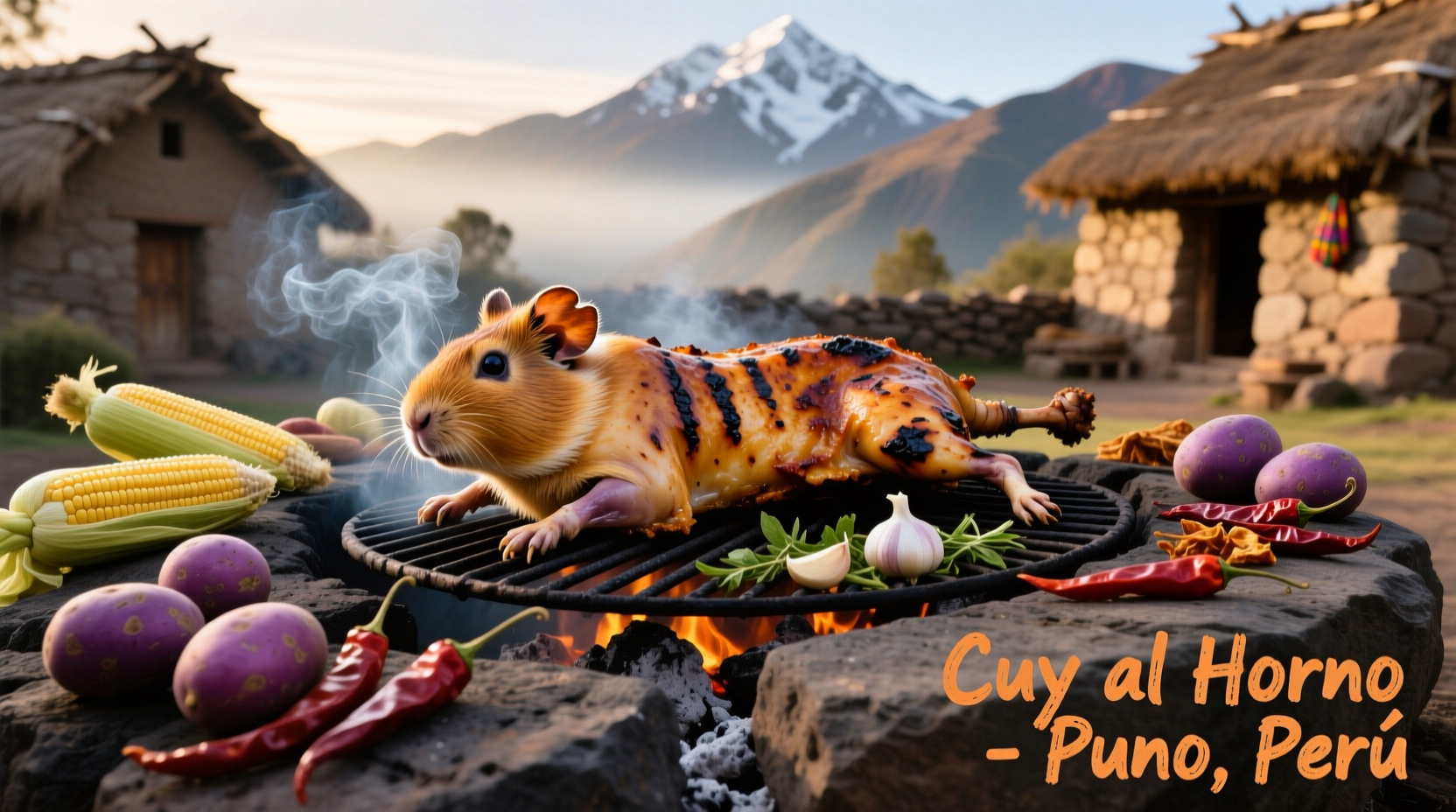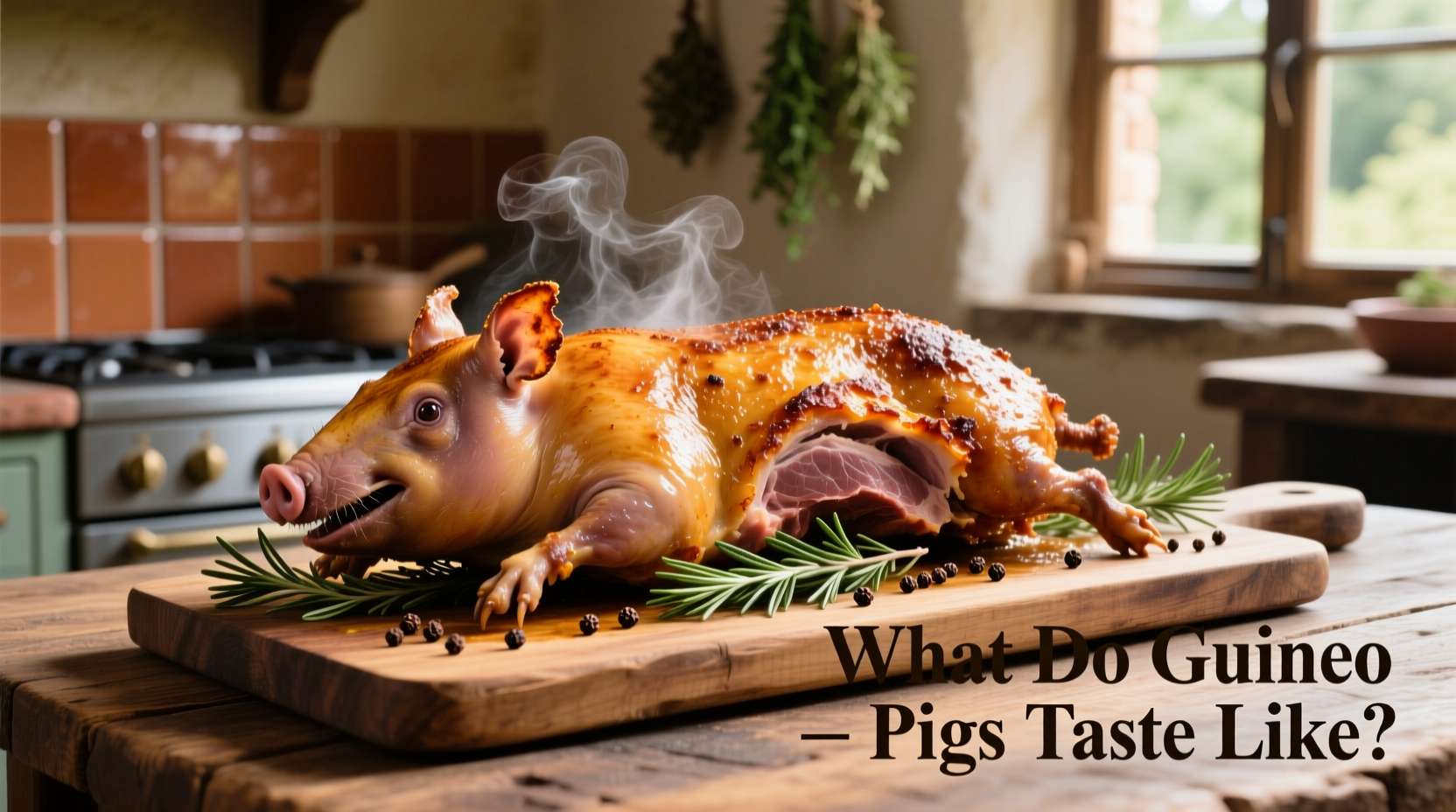The Cultural Context of Guinea Pig Consumption
While guinea pigs are primarily viewed as pets in Western countries, they've served as an important protein source in the Andean regions of South America for millennia. Archaeological evidence from Peru's Mantaro Valley shows guinea pig domestication dating back to 5,000 BCE, making them one of the earliest domesticated animals in the Americas. According to UNESCO's Intangible Cultural Heritage documentation, cuy (the Quechua word for guinea pig) remains integral to traditional celebrations in Peru, Ecuador, and Bolivia, particularly during festivals like Inti Raymi.
| Meat Type | Flavor Profile | Texture | Common Preparation Methods |
|---|---|---|---|
| Guinea Pig (Cuy) | Rich, slightly gamey, nutty notes | Firm yet tender, similar to duck | Whole roasted, fried, grilled |
| Rabbit | Mild gamey flavor | Lean, delicate | Stewed, roasted, braised |
| Dark Chicken Meat | Milder, familiar poultry taste | Moist, fibrous | Grilled, roasted, fried |
Understanding the Taste Profile
Professional chefs and culinary anthropologists describe guinea pig meat as having a unique flavor that combines elements of rabbit and dark poultry. The meat's richness comes from its higher fat content compared to chicken, while the slight gamey quality resembles wild rabbit. When traditionally prepared in Andean cuisine, cuy develops nutty notes from the roasting process. The texture is notably firm yet tender—more substantial than chicken but less dense than pork. According to research published in the Journal of Ethnobiology, the distinctive taste results from guinea pigs' herbivorous diet of grasses and vegetables, which creates a clean, earthy flavor profile.

Preparation Methods and Flavor Variations
The preparation method significantly influences guinea pig's taste. In traditional Andean cooking, cuy is often roasted whole over open flames, which creates a crispy skin while keeping the meat moist. This method enhances the nutty, roasted notes that distinguish it from other meats. Some regions prepare it with Andean spices like huacatay (black mint) and aji peppers, adding herbal and spicy dimensions to the flavor profile. The meat's relatively small size means it cooks quickly, preserving its delicate texture. Food scientists at the National Agrarian University in Lima note that proper preparation is crucial—undercooked cuy can taste overly gamey, while overcooking makes the meat tough.
Ethical and Cultural Considerations
Understanding guinea pig consumption requires recognizing the cultural context that shapes our perceptions. In Western societies where guinea pigs are exclusively pets, the idea of eating them can seem unsettling. However, in Andean communities, cuy holds deep cultural significance and represents sustainable food practices. The Food and Agriculture Organization of the United Nations recognizes guinea pig farming as an efficient protein source that requires minimal resources compared to larger livestock. It's important to approach this topic with cultural sensitivity—what seems unusual in one culture may be perfectly normal in another. When traveling in regions where cuy is traditional food, respecting local customs while making informed personal choices represents the most thoughtful approach.
Availability Outside Traditional Regions
Finding guinea pig meat outside South America remains challenging due to cultural perceptions and legal restrictions. In the United States, while not explicitly illegal, guinea pig consumption faces significant regulatory hurdles as they're not approved for slaughter under USDA meat inspection regulations. Some specialty Latin American markets in areas with large South American immigrant populations may offer frozen cuy, though availability is limited. Culinary tourism in Peru, Ecuador, and Bolivia provides the most authentic experience, where high-end restaurants like Central in Lima have elevated traditional cuy preparations to gourmet status while maintaining cultural authenticity.











 浙公网安备
33010002000092号
浙公网安备
33010002000092号 浙B2-20120091-4
浙B2-20120091-4